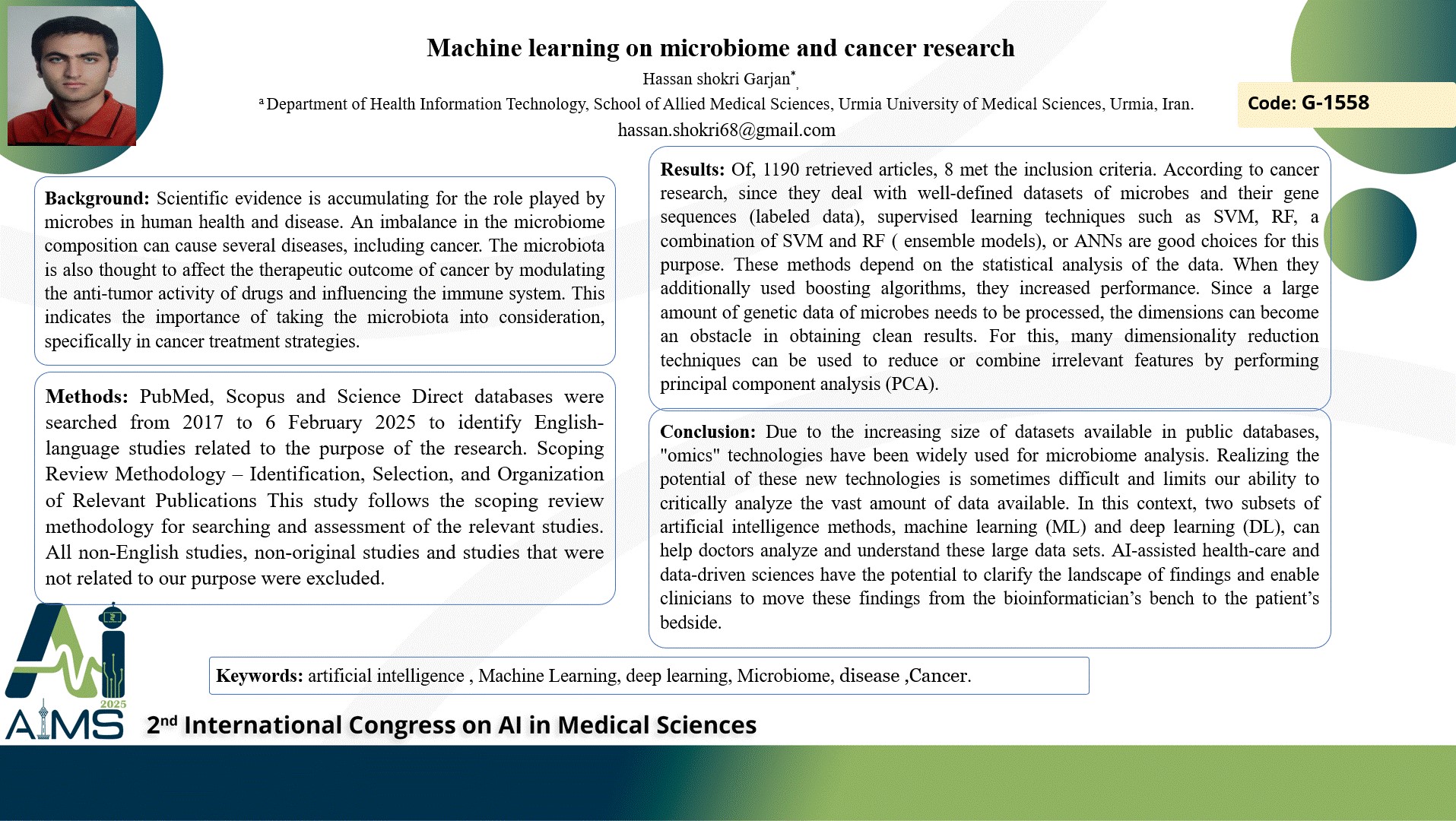یادگیری ماشینی در مورد میکروبیوم و تحقیقات سرطان
کد: G-1558
نویسندگان: Hassan Shokri Garjan * ℗
زمان بندی: زمان بندی نشده!
برچسب: تشخیص و درمان سرطان
دانلود: دانلود پوستر
خلاصه مقاله:
خلاصه مقاله
Background: Scientific evidence is accumulating for the role played by microbes in human health and disease. An imbalance in the microbiome composition can cause several diseases, including cancer. The microbiota is also thought to affect the therapeutic outcome of cancer by modulating the anti-tumor activity of drugs and influencing the immune system. This indicates the importance of taking the microbiota into consideration, specifically in cancer treatment strategies. Methods: PubMed, Scopus, and ScienceDirect databases were searched from 2017 to 6 February 2025 to identify English-language studies related to the purpose of the research. Scoping Review Methodology Identification, Selection, and Organization of Relevant Publications This study follows the scoping review methodology for searching and assessment of the relevant studies. All non-English studies, non-original studies and studies that were not related to our purpose were excluded. Results: Of, 1190 retrieved articles, 8 met the inclusion criteria. According to cancer research, since they deal with well-defined datasets of microbes and their gene sequences (labeled data), supervised learning techniques such as SVM, RF, a combination of SVM and RF (ensemble models), or ANNs are good choices for this purpose. These methods depend on the statistical analysis of the data. When they additionally used boosting algorithms, they increased performance. Since a large amount of genetic data of microbes needs to be processed, the dimensions can become an obstacle in obtaining clean results. For this, many dimensionality reduction techniques can be used to reduce or combine irrelevant features by performing principal component analysis. Conclusion: Due to the increasing size of datasets available in public databases, "omics" technologies have been widely used for microbiome analysis. Realizing the potential of these new technologies is sometimes difficult and limits our ability to critically analyze the vast amount of data available. In this context, two subsets of artificial intelligence methods, machine learning and deep learning, can help doctors analyze and understand these large data sets. AI-assisted healthcare and data-driven sciences have the potential to clarify the landscape of findings and enable clinicians to move these findings from the bioinformatician’s bench to the patient’s bedside.
کلمات کلیدی
Machine Learning, deep learning, Microbiome, Disease
